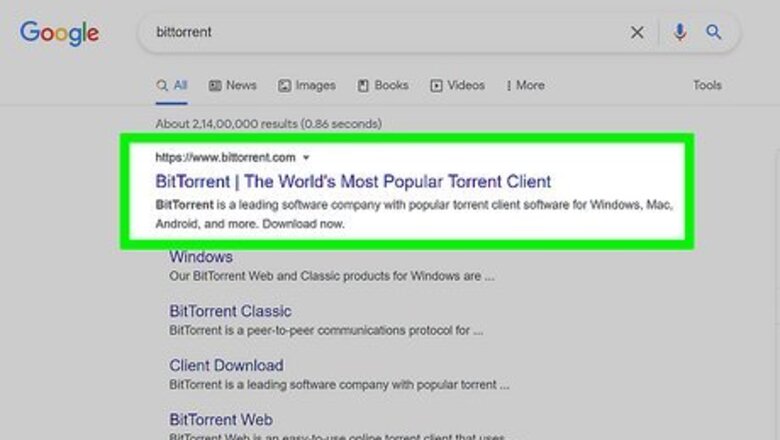
views
Installing BitTorrent
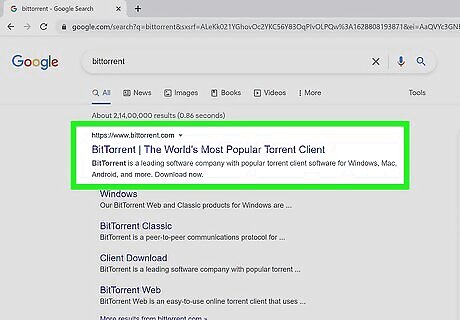
Visit the BitTorrent website. You can download the client for free from the BitTorrent website. The link for the download is located in the center of the homepage. If you need an installer for a different operating system, click the "Other Platforms + Betas" link underneath the "Get BitTorrent" button.
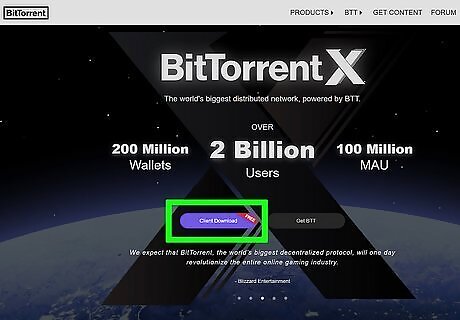
Download and install the client. You will be asked to choose between the free version or BitTorrent Plus. Most users will not need the plus version, as you can download and open as many torrents as you want with the free version. Only download the BitTorrent client from the BitTorrent website. There are other torrent clients available, but the one called BitTorrent should only be downloaded from the developers.
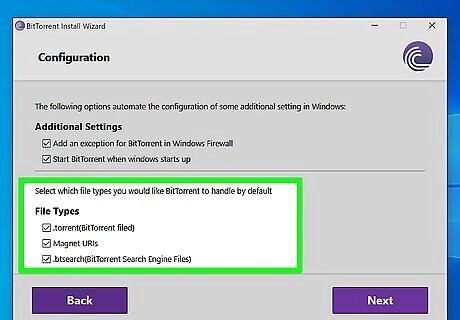
Ensure that file associations are correct. If you want BitTorrent to be the default program when you open a torrent, ensure that BitTorrent is associated with .torrent (.tor) files as well as Magnet URIs. You can make sure these boxes are checked during the installation process. Failing to set this option will result in the web browser downloading the small torrent file only. If the BitTorrent program is associated with .tor files, it will automatically detect the browser downloading the .tor file. The BitTorrent program will open it, locate the actual file, program, video, etc. that you're trying to get and download it seamlessly. BitTorrent will attempt to give you free music along with some adware during the installation process. Make sure that these are disabled before continuing with the installation (unless you want them).
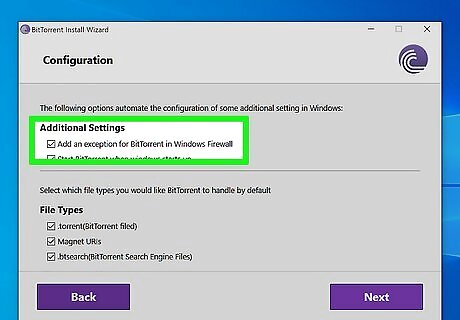
Allow BitTorrent in the firewall. When you run BitTorrent for the first time, you will most likely be asked if you want to allow the program access. If you intend to download any torrents, BitTorrent needs to be able to bypass the firewall. If you don't see a message to allow it automatically, see this guide for instructions on doing it manually.
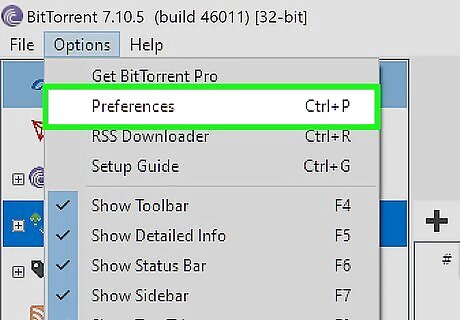
Set your preferences. Once BitTorrent is installed, open it up so you can set a few preferences before you get started. In the main window, click Options → Preferences. There are several options you should check before downloading torrents: Click the Directories option. This page will allow you to set where new downloads will be placed. You can also have downloads move to a different folder after the download is finished. Click the Bandwidth option. You will be able to set the maximum limits for uploading and downloading, which is useful if you have a data cap. Setting these to "0" will make transfers happen at the maximum speed your connection allows. Click the Queuing option. You can set how many different torrent files can upload and download at once. This setting can help you focus on one download at a time, or download many files at once. You can also set your seeding goals, which dictates how long the file is shared for.
Downloading Torrent Files
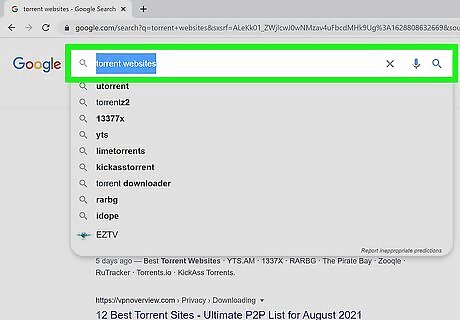
Find a good and reliable torrent tracker website. There are a variety of websites that list torrents. Some are more reliable than others. There are two main types of torrent trackers: public trackers and private trackers. Public trackers are available to anyone. These are the sites you will find when doing a web search for torrent trackers. Because of their public nature, many torrents are tracked by copyright holders, and downloading copyright protected files, commercial software, etc. can result in action from your internet service provider. Private trackers require invites. These sites are not accessible until you have been invited by another member. They often have requirements such as payment for access, maintaining a ratio of downloaded to uploaded data / titles, etc.. Private trackers are much less likely to result in cease and desist letters from copyright holders.
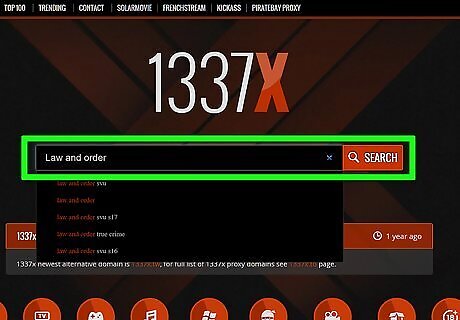
Search for your desired file. Most public trackers have every new show, movie, album, and game available, as well as popular old files. Use popular shorthand for finding the file you want. For example: if you want the third episode from the fifth season of "Law and Order" in an HD format, search for: "Law and Order s05e03 720p" or "Law and Order s05e03 1080p".
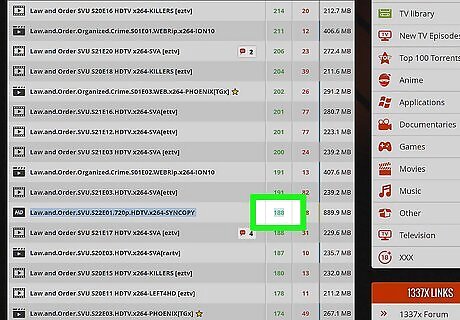
Download a torrent with plenty of seeders. The speed at which you can download a torrent file is determined by several variables. A torrent with a large number of seeders is one such desirable variable and having a low number of leechers is the other. The two interact together to affect how quickly a torrent can be downloaded. The other variables are not controlled by you really - as they consist of the connection speed that you have and the connection speed the seeders have. Most torrent sites allow you to sort search results by the number of seeders. Look for files with a large number of seeders. Not only will you download it faster, but it is less likely that the file is fake or infected with a virus. The number of leechers will affect your download speed as well. A leecher is a user that is downloading, but is not currently seeding. A leecher becomes a seeder when the full file has been downloaded. If there are significantly more leechers than seeders, the amount of bandwidth you receive will be lower, resulting in slower downloads.
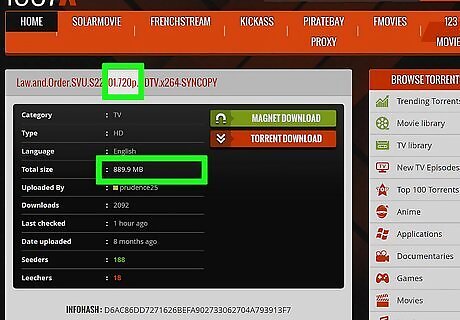
Find a balance between size and quality. This is especially important when downloading video. Oftentimes, releases are available in a variety of file sizes. The difference in size is caused by the way the video and audio has been encoded. In general, the larger the file the better the quality. Look for qualified torrent providers. Some sites provide additional tags / icons next to the name of the person providing the torrent. Click them to learn the definitions. On the flipside, downloading a larger file can take significantly longer depending on your connection. Read as many comments as possible to determine if other users feel that the quality of the file is good and worth your time. Some trackers have a rating system which allows users to vote on if the file is good or not.
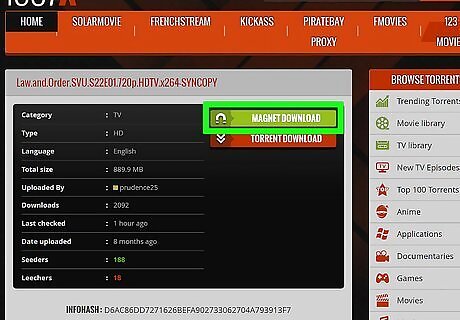
Download a magnet link if available. Magnet links are not an actual file and are instead a small snippet of text. This unique snippet will allow the torrent to match the content and download the correct files. Magnet files take one step out of the torrent process and reduce the risk of downloading a corrupted torrent file.
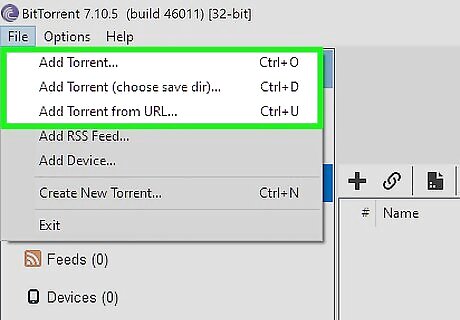
Open the torrent file with BitTorrent. If you set BitTorrent to be associated with .torrent files, it should start automatically when you open the file. Your download will begin as soon as you are connected to your first seeder. It can take some time to connect to seeders, especially if you have a poor connection or are downloading a weak torrent. You can monitor your downloads in the main window of BitTorrent. Each file will have a progress bar next to it.
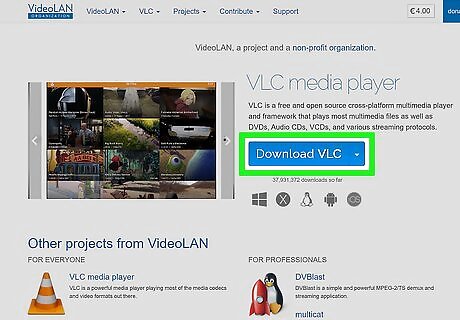
Download a good movie player. Torrents can be used to transfer any file type, and many of the most popular movie formats are not supported by Windows Media Player or QuickTime. You will need a video player that supports a wide variety of codecs and formats. VLC Player is a free, open-source media player that can play virtually any media file that you download. It is highly recommended if you are downloading lots of different video files. ISO files are disc images, and either need to be burned or mounted in a virtual drive in order to run them. These can be direct copies of discs or packages of folders. If you want to play the media file on another device, you may need to convert it into a format that will work on that device.
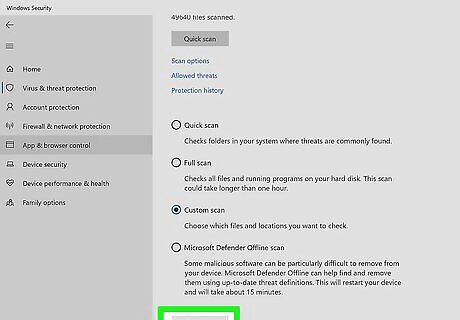
Beware of viruses. Because torrents are rarely legal, there is no oversight as to the kinds of files that are made available. This means that hackers will embed viruses in torrents that they hope to spread to other users. These are often included in popular searches in order to get as many victims as possible. Scan every file that you download for viruses. Try to download files that have been released by trusted sources in the community. Always check comments and ratings to see if anyone else experienced virus attacks with the torrent.
Seeding a Torrent File
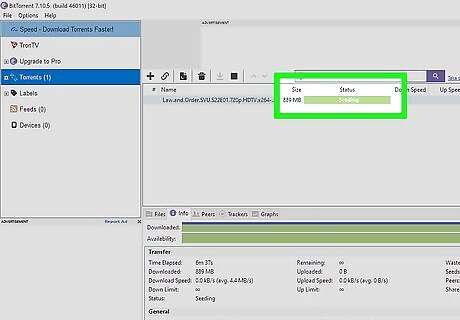
Seed after you finish downloading. Once you finish downloading the content of a torrent file, you become a seeder. This means that you are uploading data to other clients connected to the tracker. Seeding is what keeps a torrent community alive. Without seeders, no one can download the files.

Maintain a good ratio. If you are using a private community, you will most likely be expected to maintain a positive ratio with the community. This means that you will need to upload at least as much as you download.
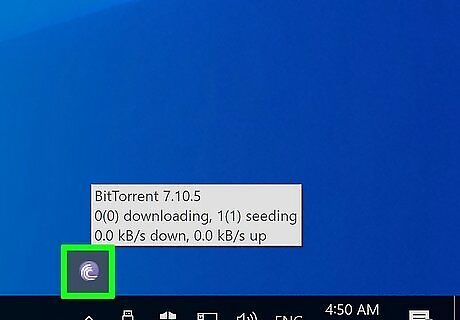
Leave your torrent client running in the background. Most internet service plans have slower upload speeds than download speeds. This means that uploading to maintain your ratio can take significantly longer than downloading the equivalent amount. Leave your torrent program running in the background while you go about your daily tasks, and you'll see your upload totals skyrocket. Running a torrent client in the background should not have a large effect on web browsing or word processing. More intensive applications such as streaming video and playing games may benefit from exiting the torrent application first.
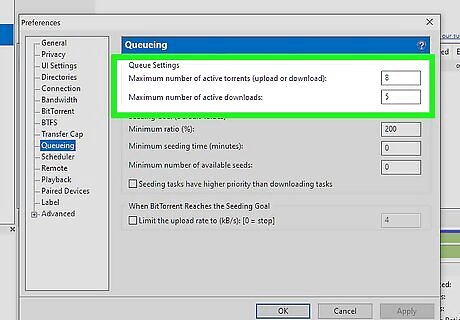
Set up a ratio limit. BitTorrent allows you to share a torrent until you reach a predetermined ratio. In the Queuing section of the Preferences menu, you can set what you'd like your ratio limit to be. If you are using a private tracker, this should be set to at least 200%. This means that a torrent which is 300 MB large will be shared until you've uploaded 600 MB.
Opening the Files Downloaded by Bittorrent
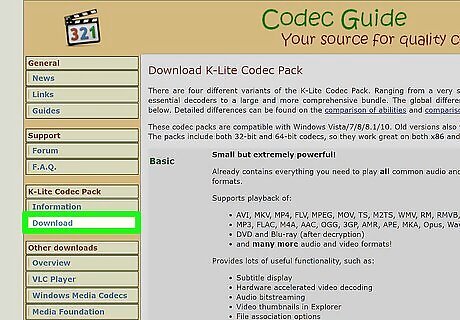
Many of the files you download will be in a compressed form or a format that will not readily permit playing or opening. In short, they require another program that will allow this. Applications and other non-media types are often compressed to a .zip, .rar, .001, .002, etc. file type and many movies are in "containers" such as .mkz, .qt, etc. that may require a particular codec to be installed if your installed media player refuses to play them. Fortunately, the most popular codec packs are often bundled together and installed easily - as is the case for K-Lite (https://www.codecguide.com/download_kl.htm). WinRAR can handle both .zip, .rar, .001, .002, .etc.
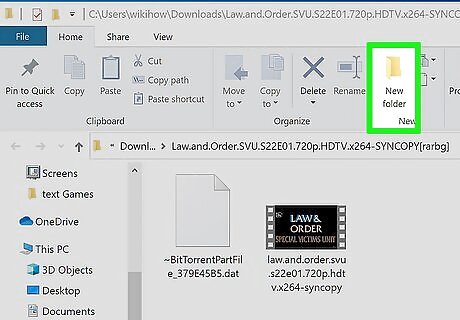
Create a new directory and move the downloaded file into it. You can minimize damage from malicious downloaded software to your installed software if you create this directory on a different partition or hard drive that does not contain important information or data. Run any program needed to open the file to reveal / extract the contents. Carefully check the files extracted for those that appear suspicious (movie files, MP3s, and similar do not need .exe or .com files and these may contain a virus).
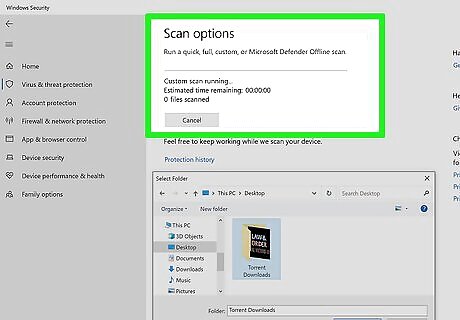
Scan the directory with your virus scanner. Do not skip this step! Evaluate the results to determine if you should proceed or not.

Play or open the file. Once you have extracted the contents of a file to reveal individual files of a program, video, etc. that are in an expected, recognizable format (.avi, .mp3, .mkz, .exe, .com etc.) you can open with a media player or run / install the application.















Comments
0 comment